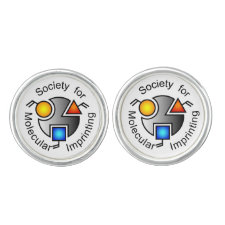
Authors: Bass JD, Anderson SL, Katz A
Publication date: 2004
Chapter title: The synthesis and catalytic application of a new class of imprinted silica.
Chapter number: 1
Page numbers: 1-6.
DOI: 10.1557/PROC-787-G1.3 Alternative URL: http://www.mrs.org/s_mrs/bin.asp?CID=2622&DID=60574&DOC=FILE.PDF
Book title: Molecularly Imprinted Materials-2003
Editors: Kofinas P, Sellergren B, Roberts MJ
Publisher: Materials Research Society
City: Warrendale
Series title: MRS Symposium Proceedings
Volume number: 787
Abstract: The effect of chemical environment surrounding a synthetic heterogeneous catalyst active site is investigated using the hydrophilic imprinting of silica. Two model reaction systems have been used for this study: (i) Knoevenagel condensation of 3-nitrobenzaldehyde and malononitrile and (ii) Suzuki coupling of bromobenzene and phenylboronic acid. Using a catalyst in which isolated imprinted amines are surrounded by an acidic silanol-rich environment led to rate accelerations of over 120-fold relative to catalysts in which the amines are surrounded by a hydrophobic environment consisting of trimethylsilyl functional groups for system (i). This result parallels our previous study on the effect of the outer sphere composition on rate acceleration of Knoevenagel reactions using isophthalaldehyde as the aldehyde reactant. We also extended our method for the hydrophilic imprinting of bulk silica to organometallic systems, by successfully synthesizing a tethered palladium complex within the imprinted pocket. This material was used as an active catalyst for (ii). Our results show that a hydrophobic framework environment results in higher initial turnover frequencies than an acidic silanol-rich framework for the Suzuki coupling reaction of bromobenzene and phenylboronic acid, albeit with a lower overall effect than observed in the Knoevenagel system (i). Altogether, these results demonstrate the control of chemical reactivity via the rational design of the outer sphere using an imprinting approach



Join the Society for Molecular Imprinting

New items RSS feed
Sign-up for e-mail updates:
Choose between receiving an occasional newsletter or more frequent e-mail alerts.
Click here to go to the sign-up page.
Is your name elemental or peptidic? Enter your name and find out by clicking either of the buttons below!
Other products you may like:
 MIPdatabase
MIPdatabase









